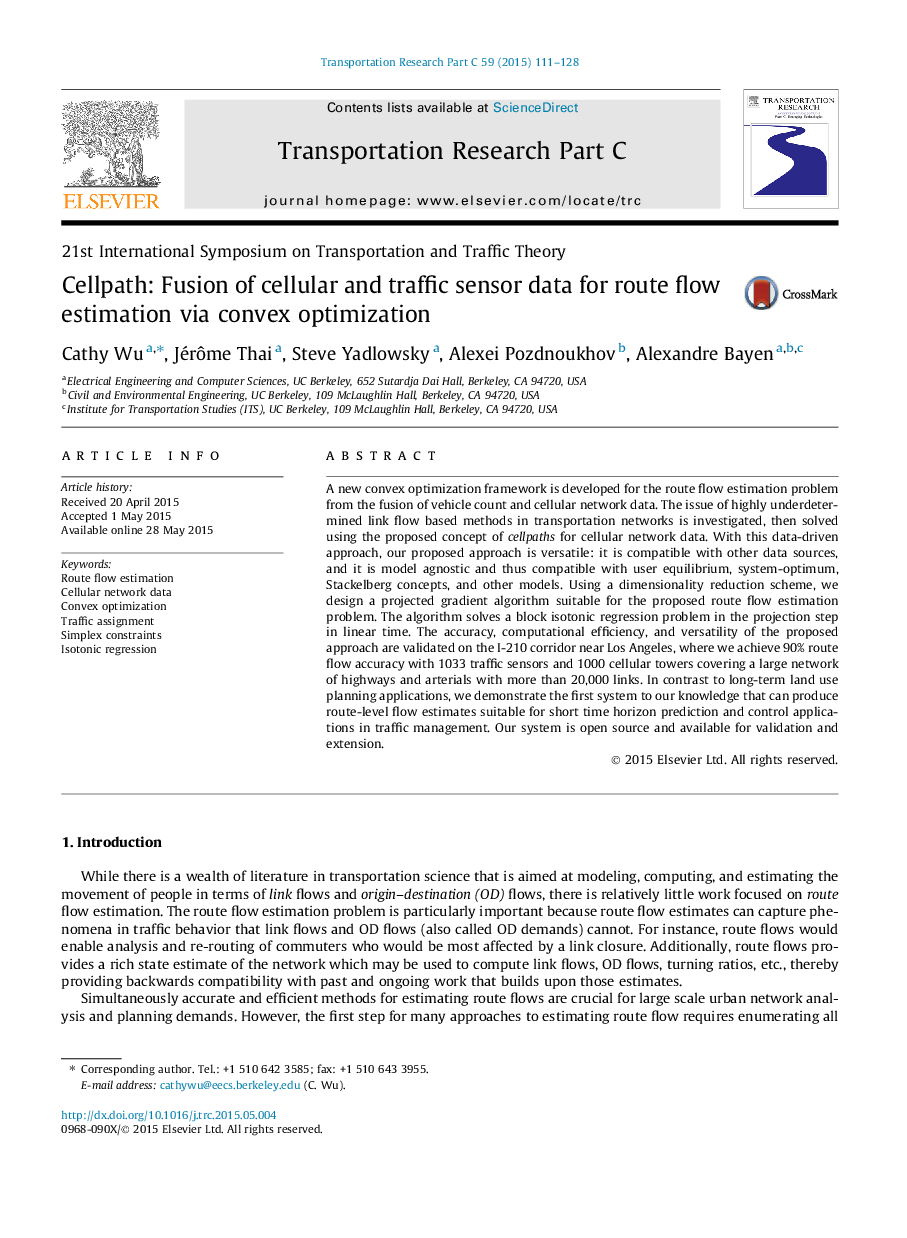| Article ID | Journal | Published Year | Pages | File Type |
|---|---|---|---|---|
| 524860 | Transportation Research Part C: Emerging Technologies | 2015 | 18 Pages |
•We propose a convex optimization formulation for the route flow estimation problem.•We fuse data from loop detectors and mobility traces from cellular networks.•Our formulation is purely data-driven with no behavioral or equilibrium assumptions.•We devise a scalable projected gradient method based on isotonic regression.•Our system achieves 90% route flow accuracy on Greater Los Angeles Area network.
A new convex optimization framework is developed for the route flow estimation problem from the fusion of vehicle count and cellular network data. The issue of highly underdetermined link flow based methods in transportation networks is investigated, then solved using the proposed concept of cellpaths for cellular network data. With this data-driven approach, our proposed approach is versatile: it is compatible with other data sources, and it is model agnostic and thus compatible with user equilibrium, system-optimum, Stackelberg concepts, and other models. Using a dimensionality reduction scheme, we design a projected gradient algorithm suitable for the proposed route flow estimation problem. The algorithm solves a block isotonic regression problem in the projection step in linear time. The accuracy, computational efficiency, and versatility of the proposed approach are validated on the I-210 corridor near Los Angeles, where we achieve 90% route flow accuracy with 1033 traffic sensors and 1000 cellular towers covering a large network of highways and arterials with more than 20,000 links. In contrast to long-term land use planning applications, we demonstrate the first system to our knowledge that can produce route-level flow estimates suitable for short time horizon prediction and control applications in traffic management. Our system is open source and available for validation and extension.
